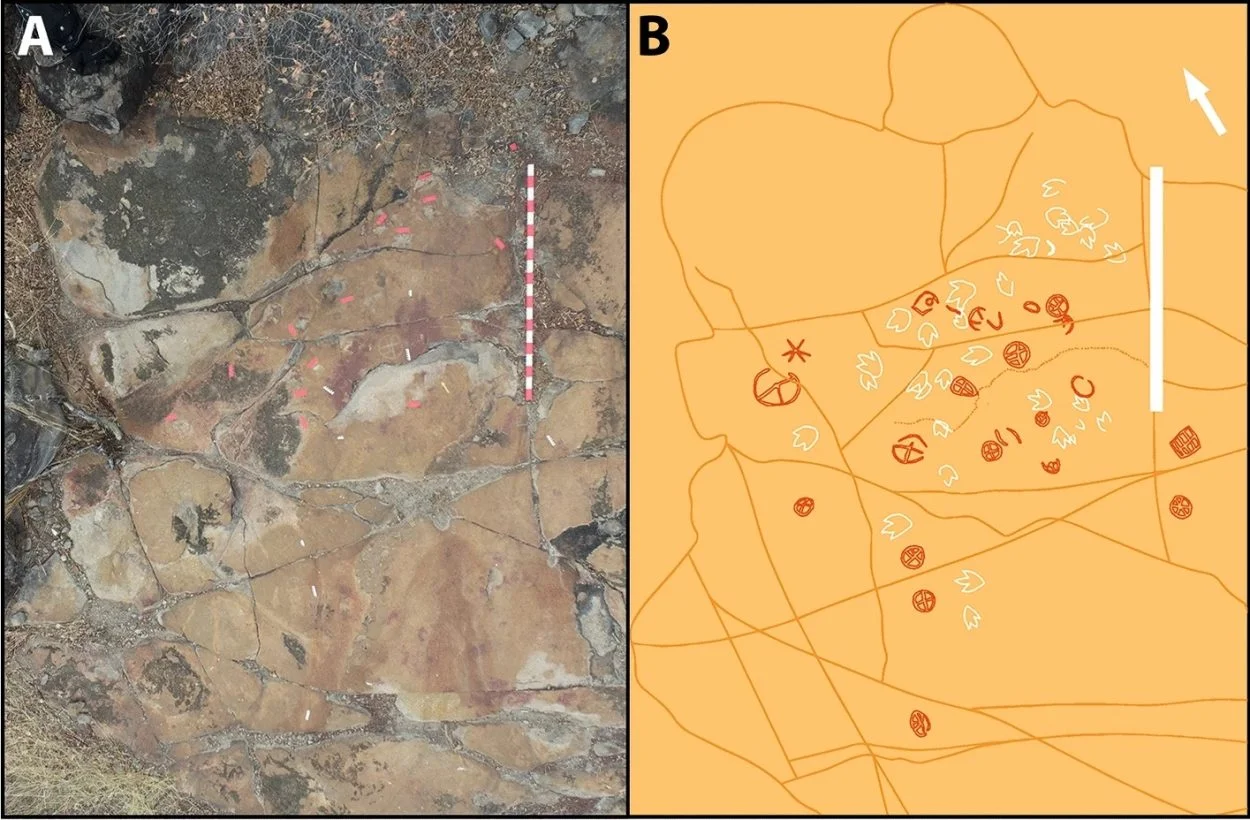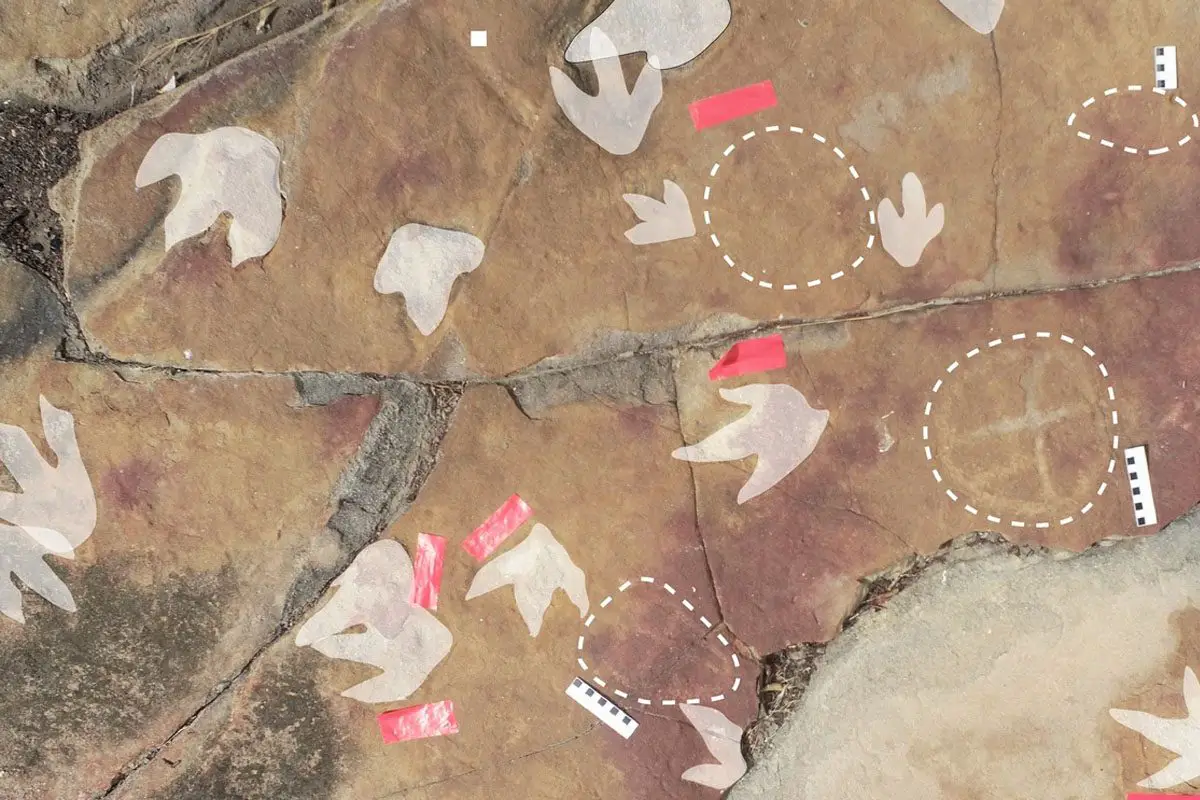A study of the Serrote do Letreiro Site (meaning “Signpost Hill”) in Brazil’s Paraíba State has led to the discovery of an assemblage of petroglyphs alongside dinosaur tracks.
The Serrote do Letreiro site has three rock outcrops covering an area of 15,000 square metres. The site is situated in the Vale dos Dinossauros Natural Monument (Known as Dinosaur Valley), located on the periphery of the Sousa Basin in the Sousa municipality.
A recent study, published in the journal scientific reports, reveals that the outcrops have fossilised footprints from the Early Cretaceous Period, left behind by theropods, sauropods, and iguanodontian dinosaurs.
The earliest mention of dinosaur tracks from the Sousa region date back to the early 20th century, with the first palaeontological study conducted in 1975.
A later publication in 1979 gave reference to the existence of petroglyphs (referred to as “Cariri Indian carvings”), however, no further investigations were carried out to document the findings.
In a recent study at Serrote do Letreiro, archaeologists have found a series of petroglyphs alongside the dinosaur tracks, which according to the researchers are mainly characterised by circular motifs similar to petroglyphs found in the states of Paraíba and Rio Grande do Norte.

The petroglyphs have been described as low relief geometric circles filled with radial lines, which were created by carving an abrasive instrument against the rock surface.
According to the study authors: “Despite the profusion of identified petroglyphs, no overlap was observed between these inscriptions and the fossilised footprints. In none of the cases was it found that the creation of a petroglyph resulted in damage to the existing footprints, suggesting thoughtfulness by the makers.”
Archaeologists have determined that the petroglyphs belong to a broad set of motifs, either pure or abstract, and of similar or identical execution techniques found in other archaeological rock art sites in the Brazilian Northeast region.
Based on radiocarbon dating of burials found at these associated sites, the researchers suggest that the petroglyphs date from a period spanning 9400 to 2620 years BP.
“Further research utilising new methods of direct dating of petroglyphs, such as X-ray fluorescence spectrometry, will certainly shed light on the chronology issue. In the absence of applying absolute dating methods to the petroglyphs, the proposed dating here remains restricted to iconographic inferences, as well as extrapolation from the temporal horizons identified in the few dated sites in the region,” said the study authors.
Header Image Credit : Scientific Reports
Sources : Scientific Reports – A remarkable assemblage of petroglyphs and dinosaur footprints in Northeast Brazil. https://doi.org/10.1038/s41598-024-56479-3





